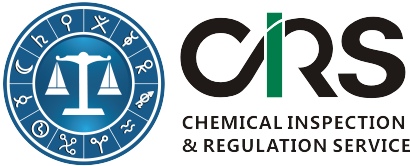Thirteen substances have been added onto SVHC candidate list on 18 June 2012
16 June 2012, According to ECHA’s latest press release, thirteen substances will be added onto SVHC candidate list and may subsequently become subject to authorization. Those thirteen substances will be officially included in the Candidate List for authorisation on 18 June 2012.
The Member State Committee (MSC) unanimously agreed on the identification of five substances of very high concern (SVHCs). These five substances have been included in the Candidate List in its next update together with eight further substances that did not require the MSC's involvement.
Those thirteen substances are:
Substance name |
EC number |
CAS number |
Proposed SVHC property |
Potential uses * |
1,2-bis(2-methoxyethoxy)ethane (TEGDME; triglyme) |
203-977-3 |
112-49-2 |
Toxic for reproduction (Article 57 c) |
Mainly used as a solvent or as a processing aid in the manufacture and formulation of industrial chemicals. Minor use in brake fluids and repair of motor vehicles. |
1,2-dimethoxyethane; ethylene glycol dimethyl ether (EGDME) |
203-794-9 |
110-71-4 |
Toxic for reproduction (Article 57 c) |
Mainly used as a solvent or as a processing aid in the manufacture and formulation of industrial chemicals, including use as an electrolyte solvent in lithium batteries. |
Diboron trioxide |
215-125-8 |
1303-86-2 |
Toxic for reproduction (Article 57 c) |
Used in a multitude of applications, e.g., in glass and glass fibres, frits, ceramics, flame retardants, catalysts, industrial fluids, metallurgy, adhesives, inks/paints, film developers solutions, detergents and cleaners, biocides and insecticides. |
Formamide |
200-842-0 |
75-12-7 |
Toxic for reproduction (Article 57 c) |
Mainly used as an intermediate. Minor uses as solvent, as reagent chemical (in the pharmaceutical industry) and as laboratory chemical. The substance seems further to be used in the agrochemical industry and as a plasticiser. |
Lead(II) bis(methanesulfonate) |
401-750-5 |
17570-76-2 |
Toxic for reproduction (Article 57 c) |
Mainly used in plating (both electrolytic and electroless) processes for electronic components (such as printed circuit boards). |
TGIC (1,3,5-tris(oxiranylmethyl)-1,3,5-triazine-2,4,6(1H,3H,5H)-trione) |
219-514-3 |
2451-62-9 |
Mutagenic (Article 57b) |
Mainly used as a hardener in resins and coatings; also used in inks for the printed circuit board industry, electrical insulation material, resin moulding systems, laminated sheeting, silk screen printing coatings, tools, adhesives, lining materials and stabilisers for plastics. |
β-TGIC (1,3,5-tris[(2S and 2R)-2,3-epoxypropyl]-1,3,5-triazine-2,4,6-(1H,3H,5H)-trione) |
423-400-0 |
59653-74-6 |
Mutagenic (Article 57b) |
Mainly used as a hardener in resins and coatings; also used in inks for the printed circuit board industry, electrical insulation material, resin moulding systems, laminated sheeting, silk screen printing coatings, tools, adhesives, lining materials and stabilisers for plastics. |
4,4'-bis(dimethylamino)benzophenone (Michler's ketone) |
202-027-5 |
90-94-8 |
Carcinogenic (Article 57a) |
Intermediate in the manufacture of triphenylmethane dyes and other substances. Further potential uses include as additive (photosensitiser) in dyes and pigments, in dry film products, as a process chemical in the production of electronic circuit boards, in research and development applications. |
N,N,N',N'-tetramethyl-4,4'-methylenedianiline (Michler's base) |
202-959-2 |
101-61-1 |
Carcinogenic (Article 57a) |
Intermediate in the manufacture of dyes and other substances. Used also as chemical reagent in research and development. |
[4-[4,4'-bis(dimethylamino) benzhydrylidene]cyclohexa-2,5-dien-1-ylidene]dimethylammonium chloride (C.I. Basic Violet 3) |
208-953-6 |
548-62-9 |
Carcinogenic** (Article 57a) |
Used mainly for paper colouring and inks supplied in printer cartridges and ball pens. Further uses include staining of dried plants, marker for increasing the visibility of liquids, staining in microbial and clinical laboratories. |
[4-[[4-anilino-1-naphthyl][4-(dimethylamino)phenyl]methylene]cyclohexa-2,5-dien-1-ylidene] dimethylammonium chloride (C.I. Basic Blue 26) |
219-943-6 |
2580-56-5 |
Carcinogenic** (Article 57a) |
Used in the production of inks, cleaners, and coatings, as well as for dyeing of paper, packaging, textiles, plastic products, and other types of articles. It is also used in diagnostic and analytical applications. |
α,α-Bis[4-(dimethylamino)phenyl]-4 (phenylamino)naphthalene-1-methanol (C.I. Solvent Blue 4) |
229-851-8 |
6786-83-0 |
Carcinogenic** (Article 57a) |
Mainly used in the production of printing and writing inks, for dyeing of paper and in mixtures such as windscreen washing agents. |
4,4'-bis(dimethylamino)-4''-(methylamino)trityl alcohol |
209-218-2 |
561-41-1 |
Carcinogenic** (Article 57a) |
Used in the production of writing inks and potentially in the production of other inks, as well as for dyeing of a variety of materials. |
* Potential uses according to information provided in the Annex XV dossiers.
** The substance does only fulfil the criteria of REACH Art. 57 (a) if it contains Michler's ketone (EC Number: 202-027-5) or Michler's base (EC Number: 202-959-2) in a concentration ≥ 0.1% (weight / weight)
Reference
CIRS's Comments
The total number of substances on SVHC candidate list will reach 84. Companies will have to notify not later than 6 months after the inclusion of a substance in the Candidate List. There are other obligations associated with substances on candiate list as well. More info about how to comply with REACH once your substance is on the list can be found here.
Contact Our Expert
Ms Louise Halpin, CIRS Ireland
Unit 1 Ardee Business Park, Hale Street, Ardee, Co. Louth, Ireland
Tel: +353 41 9806 916 | Fax: +353 41 9806 999
Email: service@cirs-reach.com | http://www.cirs-reach.com
